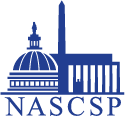Community Action and Accountability
Community Action, as part of its original mission in the 1960s and, currently, through the federal Community Services Block Grant, is the only congressionally-established network of agencies given the mandate of addressing the causes and conditions of poverty in the United States.
In response to the Government Performance and Reporting Act of 1994, Community Action began implementation of the outcome-based management system known as “ROMA,” or results-oriented management and accountability, which focused on documenting the achievements of outcomes created or fostered by Community Action in three focus areas: Individuals/Families, Communities, and Agencies.
Mandated reporting to state and federal agencies on the outcomes achieved by program participants; positive community change fostered by agency initiatives and partnerships; and the improvements in agency management and service-delivery processes brought about by this management system began in 2001. A set of indicators of community action performance were created to allow for the aggregation of national outcome data in 2005. Annual reports including this national data are available at the website of the National Association of State Community Services Programs.
Use of the “ROMA Cycle” was adopted by the network in 2006 to ensure that a results-orientation was used in all aspects of agency operations: assessments, planning, implementation, observation and documentation of results, and evaluation of impact.
The community action network is currently developing “ROMA Next Generation” to strengthen the performance management culture of Community Action.
“…ROMA Next Generation is about more robust data analyses to enable agencies to more effectively connect people and distressed communities with the services needed to achieve specific outcomes”
“ROMA Next Generation asks agencies and states to establish a better understanding of what services produce the best outcomes for specific family groups and communities”
“ROMA Next Generation will ensure that agencies and states are using their data to focus their limited resources on what works best to achieve Community Action’s long-term goals of self-sufficiency and revitalized communities.” – roma-nptp.org
• Download the factsheet below from the NASCSP website here. •
2018 State CSBG Factsheets
From the AR FFY 2018 Community Services Block Grant
CSBG NETWORK PARTICIPANTS
CSBG NETWORK RESOURCES
$0.79 State
$0.15 Local
$3.09 Private
$0.42 Value of Volunteer Hours
$4.45
CSBG PERFORMANCE OUTCOMES FOR ARKANSAS
2,319 Employment
This includes outcomes such as obtaining and maintaining a job, increasing income, and obtaining benefits.2,071 Income
This--the total of outcomes for both income and asset building--includes outcomes such as maintaining a budget, opening a savings account, increasing assets and net worth, and improving financial wellbeing.114,883 Health
This--the total outcome for both health and social/behavioral development--includes outcomes such as increasing nutrition skills, improving physical or mental health, and living independently.42,284 Housing
This includes outcomes such as obtaining and maintaining housing, avoiding eviction or foreclosure, and reducing energy burden.27,389 Civic Engagement
This includes outcomes such as increasing leadership skills, and improving social networks.46,859 Education
This--the total outcomes for both education and cognitive development--includes outcomes such as improved literacy skills, school readiness, and obtaining additional education and diplomas.

